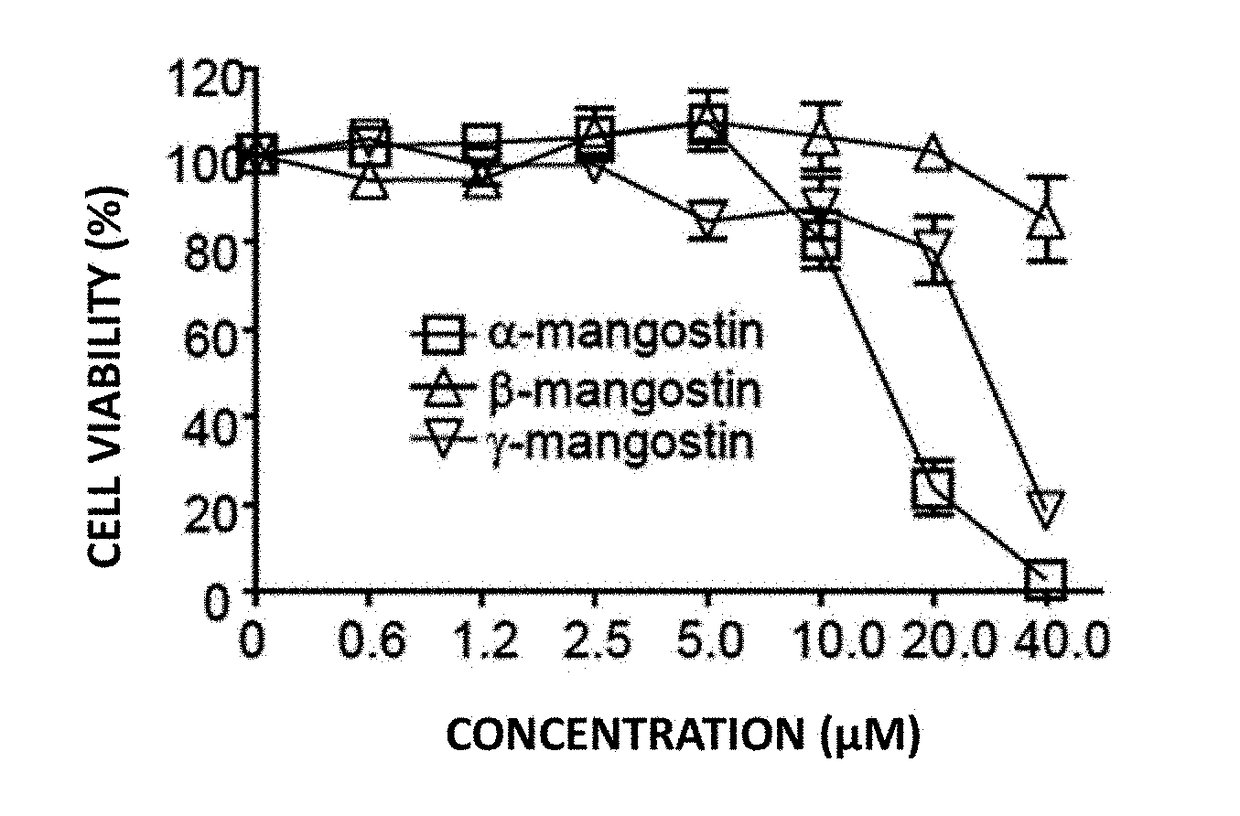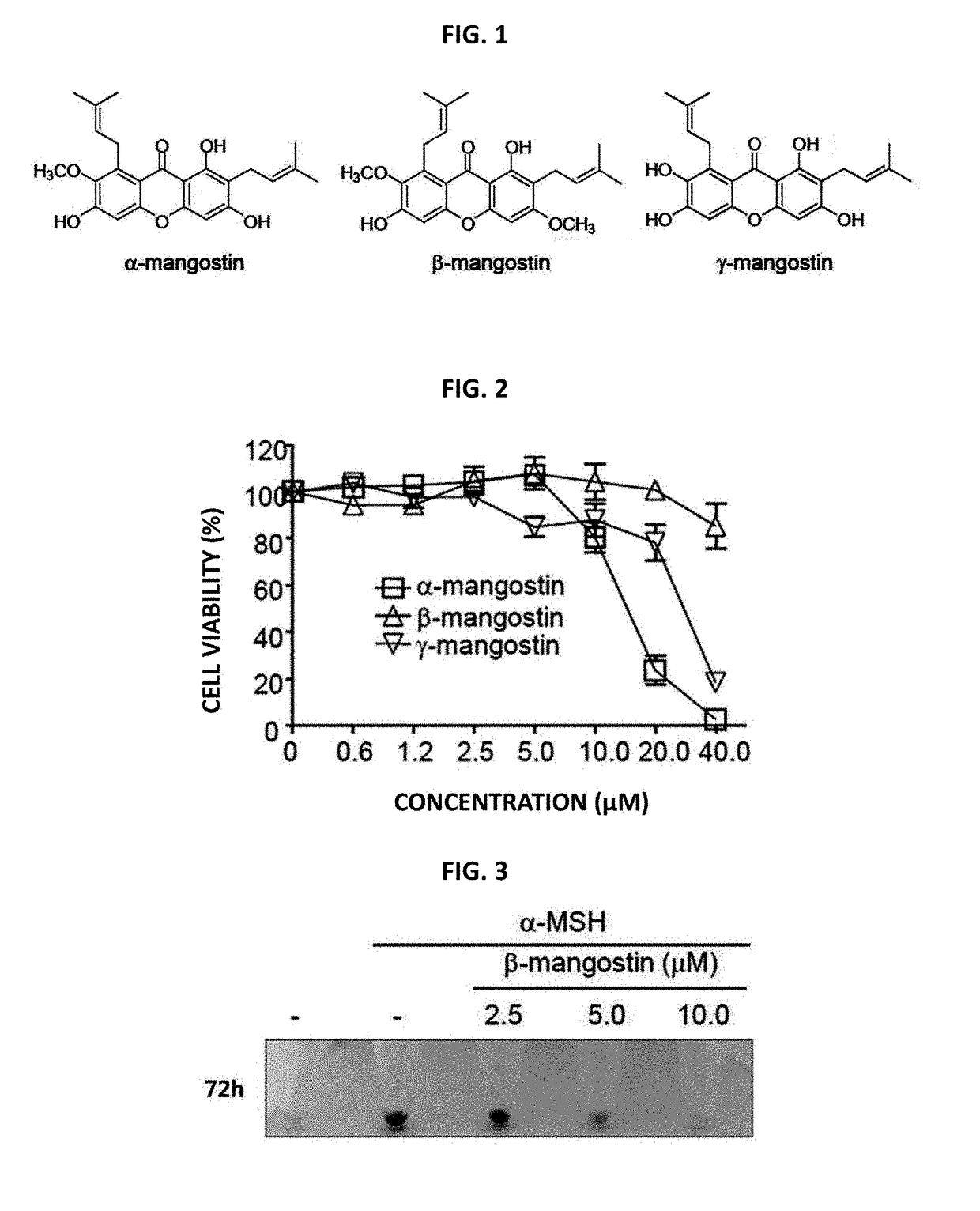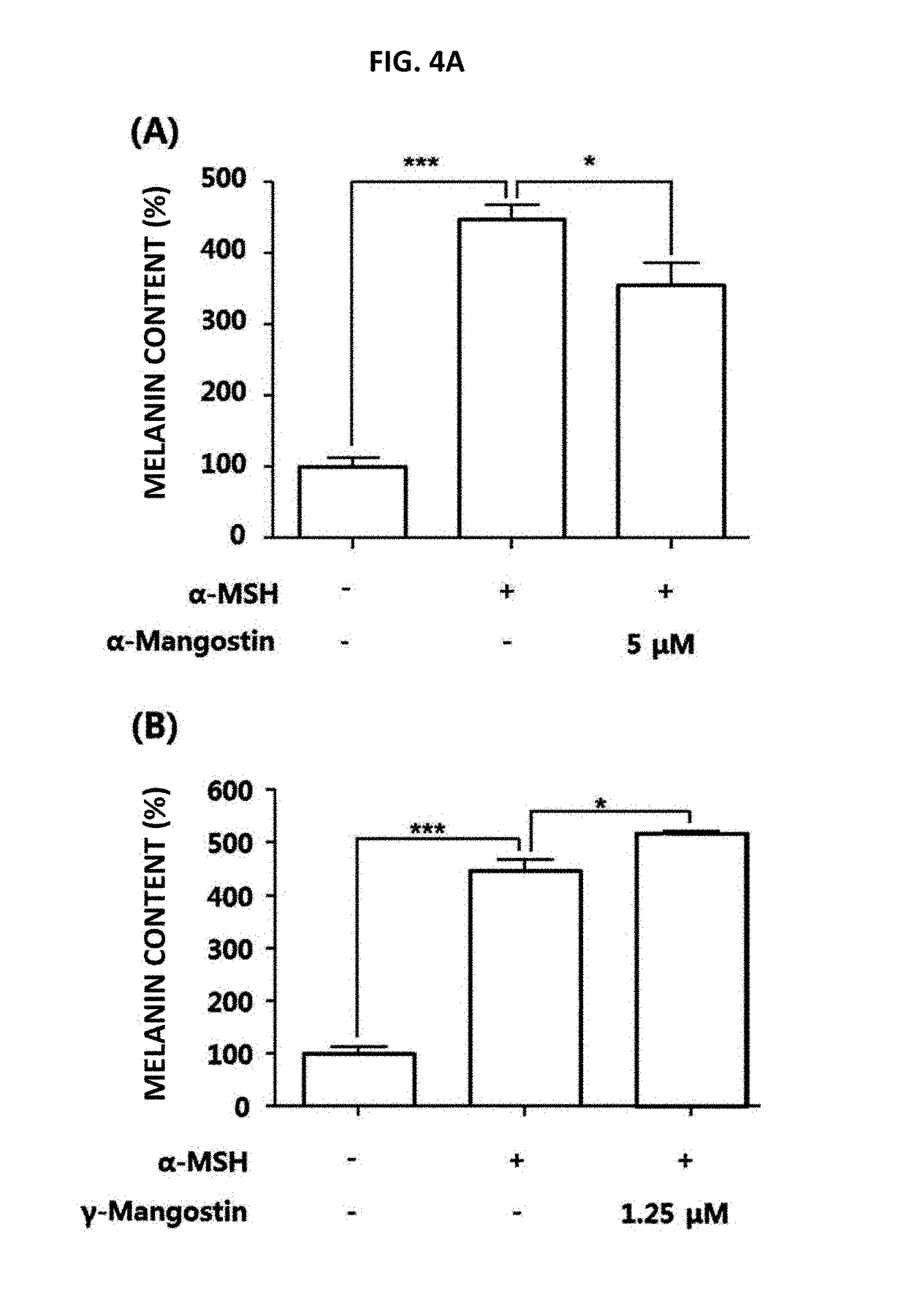Composition for skin whitening comprising beta-mangostin as effective ingredient
a technology of mangostin and beta-mangostin, which is applied in the direction of dermatological disorders, plant/algae/fungi/lichen ingredients, drug compositions, etc., can solve the problems of poor stability of the molecule itself, limitation in the actual use, and inability to meet the needs of melanin production inhibitors, etc., to prevent or improve a melanin hyperpigmentation disorder, suppress the expression of tyrosinas
- Summary
- Abstract
- Description
- Claims
- Application Information
AI Technical Summary
Benefits of technology
Problems solved by technology
Method used
Image
Examples
example 1
of Cell Viability According to Treatment with β-Mangostin of the Present Invention
[0065]In Example 1, to find out functional plant metabolites which induce depigmentation in melanin cells, α-, β- and γ-mangostin, which are 3 kinds of edible xanthones, were isolated and purified from mangosteen (Garcinia mangostana) seedcases (FIG. 1). To determine the cytotoxicity of those 3 kinds of edible xanthones, B16F10 cells were treated with α-, β- and γ-mangostin at various concentrations followed by culture for 24 hours. Then, based on MTT β-(4,5-dimethylthiazol-2-yl)-2,5-diphenyltetrazolium bromide) analysis, cell viability was determined. As a result, it was found as shown in FIG. 2 that, in case of a treatment with α- and γ-mangostin, potent cytotoxicity is exhibited at 20 μM and 40 μM while no cytotoxicity is exhibited even at 40 μM in case of a treatment with β-mangostin.
example 2
ontent Analysis According to Treatment with β-Mangostin of the Present Invention
[0066]In order to see whether or not β-mangostin can suppress the pigmentation induced by α-MSH (melanocyte-stimulating hormone), B16F10 cells were treated with α-MSH and β-mangostin followed by incubation for 72 hours. As a result, as it is shown in FIG. 3, cell pellets were turned into black color when the treatment is carried out with α-MSH only. However, in case of the treatment together with β-mangostin, pellet color was changed from black color to white color. Namely, it was shown that β-mangostin suppresses the pigmentation induced by α-MSH. Furthermore, as a result of comparing the melanin content lowering effect of α-, β- and γ-mangostin, which are 3 kinds of edible xanthones, it was found that the co-treatment of α-mangostin and α-MSH yields about 20% higher melanin content reduction compared to the treatment with α-MSH only, while γ-mangostin further increased the melanin content (FIG. 4A). On...
example 3
tion of Proteasome-Nondependent Melanosome Removing Effect According to Treatment with β-Mangostin of the Present Invention
[0067]In order to confirm the whitening effect of β-mangostin, RT-PCR and Western blotting analysis were carried out for tyrosinase and TRP-1. As a result, as it is shown in FIG. 5, the expression amount of tyrosinase and TRP-1, which are induced by α-MSH, was effectively lowered by β-mangostin
[0068]In order to determine whether or not the aforementioned reduction of tyrosinase is proteasome-mediated or not, a co-treatment of MG132 as a proteasome inhibitor and β-mangostin of the present invention was carried out. As a result, as it is shown in FIG. 6(A), the tyrosinase expression amount did not increase in the cells which have been treated with MG132. As a result of the analysis by measuring the melanin content and L-DOPA oxidation, there was also no influence on the melanin content and L-DOPA oxidation as it is shown in FIGS. 6B and 6C. Based on those results,...
PUM
 Login to View More
Login to View More Abstract
Description
Claims
Application Information
 Login to View More
Login to View More - R&D
- Intellectual Property
- Life Sciences
- Materials
- Tech Scout
- Unparalleled Data Quality
- Higher Quality Content
- 60% Fewer Hallucinations
Browse by: Latest US Patents, China's latest patents, Technical Efficacy Thesaurus, Application Domain, Technology Topic, Popular Technical Reports.
© 2025 PatSnap. All rights reserved.Legal|Privacy policy|Modern Slavery Act Transparency Statement|Sitemap|About US| Contact US: help@patsnap.com



